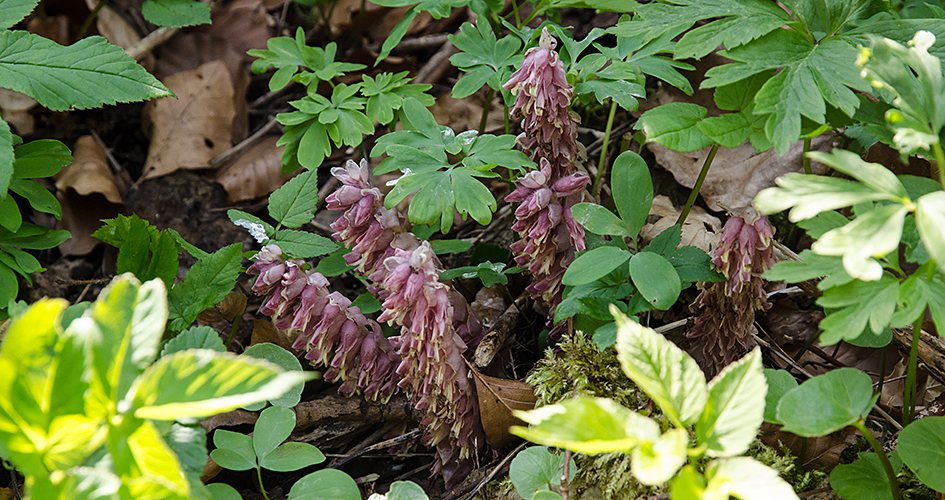 Foto: Maria Sandell
Foto: Maria SandellPlant life
Wood anemones, yellow wood anemones, yellow star-of-Bethlehem and lesser celandine cover the ground in late April and early May.
The trees are still bare then and the light penetrates to the ground. During the summer the entire national park is filled with lush greenery, and the spring flowers are replaced by dog’s mercury and ground-elder.
Bird-in-a-bush with its pink and white flowers is the national park’s special flower. It blossoms profusely in the southern part of the area at the same time as the other spring flowers.
Grazing is forbidden and the forest becomes overgrown
A ban on grazing when the national park was formed changed the forest’s circumstances, and it began to live a life of its own. Brush and vegetation started to intrude on the open forest, and the large oaks prevalent when the national park was formed are no longer as prominent as they once were.
A flourishing colonnade in transition
As a result, the way the national park looks today differs from the original idea. Dalby Söderskog is steadily evolving into an enthralling natural forest with a great variety of tree types. The next generation of visitors, too, will experience new aspects of the forest.
Today the forest consists of many types of trees, but beech, elm and ash trees predominate. However, elm disease has wreaked havoc with the large elm trees. In the pockets of light that form when the dead elms fall, ash trees arise.
A forest teeming with life
In a natural forest the dead trees stand side by side with the living ones. The delicate tree seedlings grow up in the pockets of light formed alongside the fallen giants. A forest where trees with their deadwood are allowed to remain promotes great biodiversity.
Share with your friends
Share this page with your friends on Facebook, X (formerly Twitter), Google+ and e-mail.





